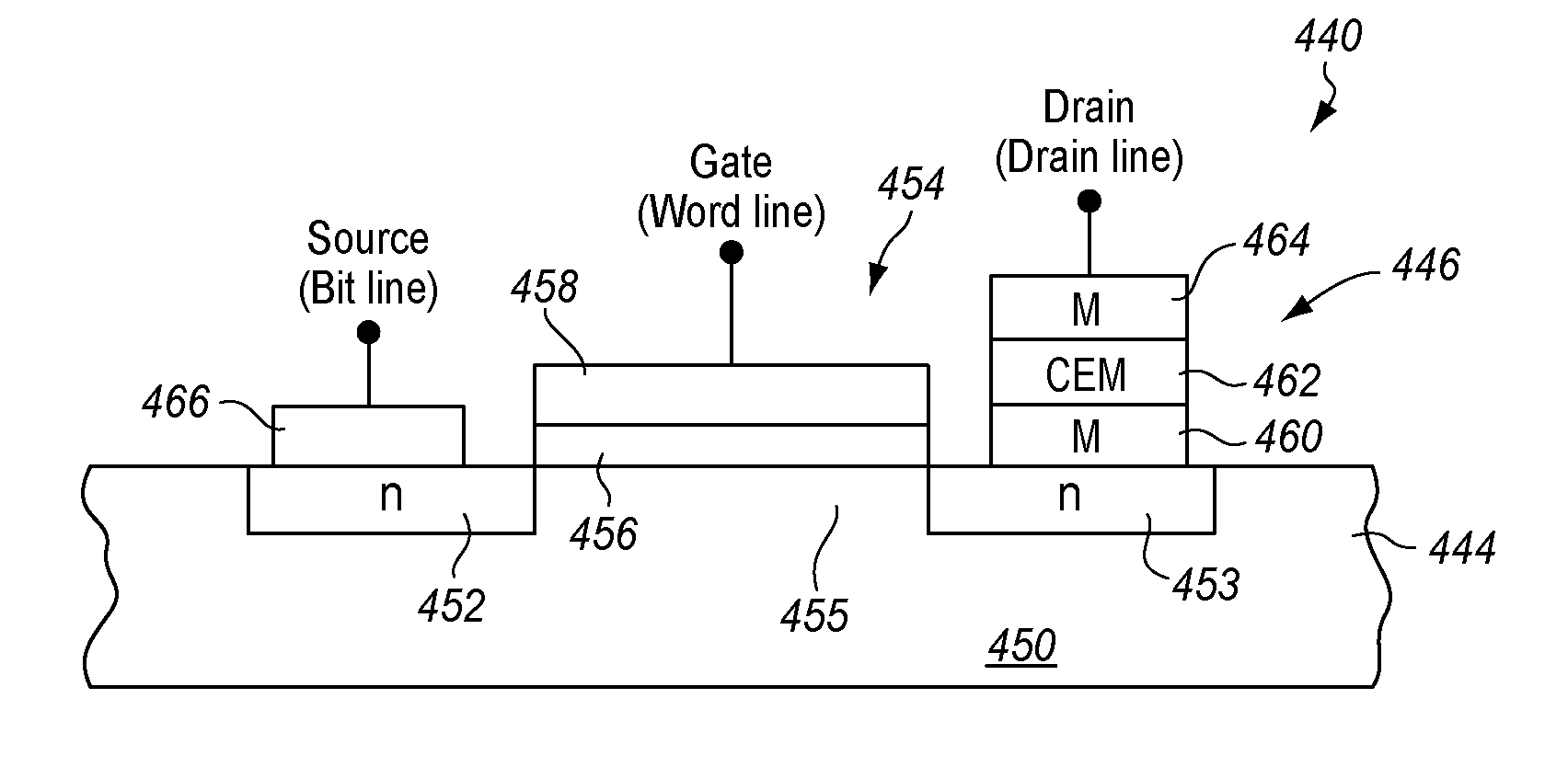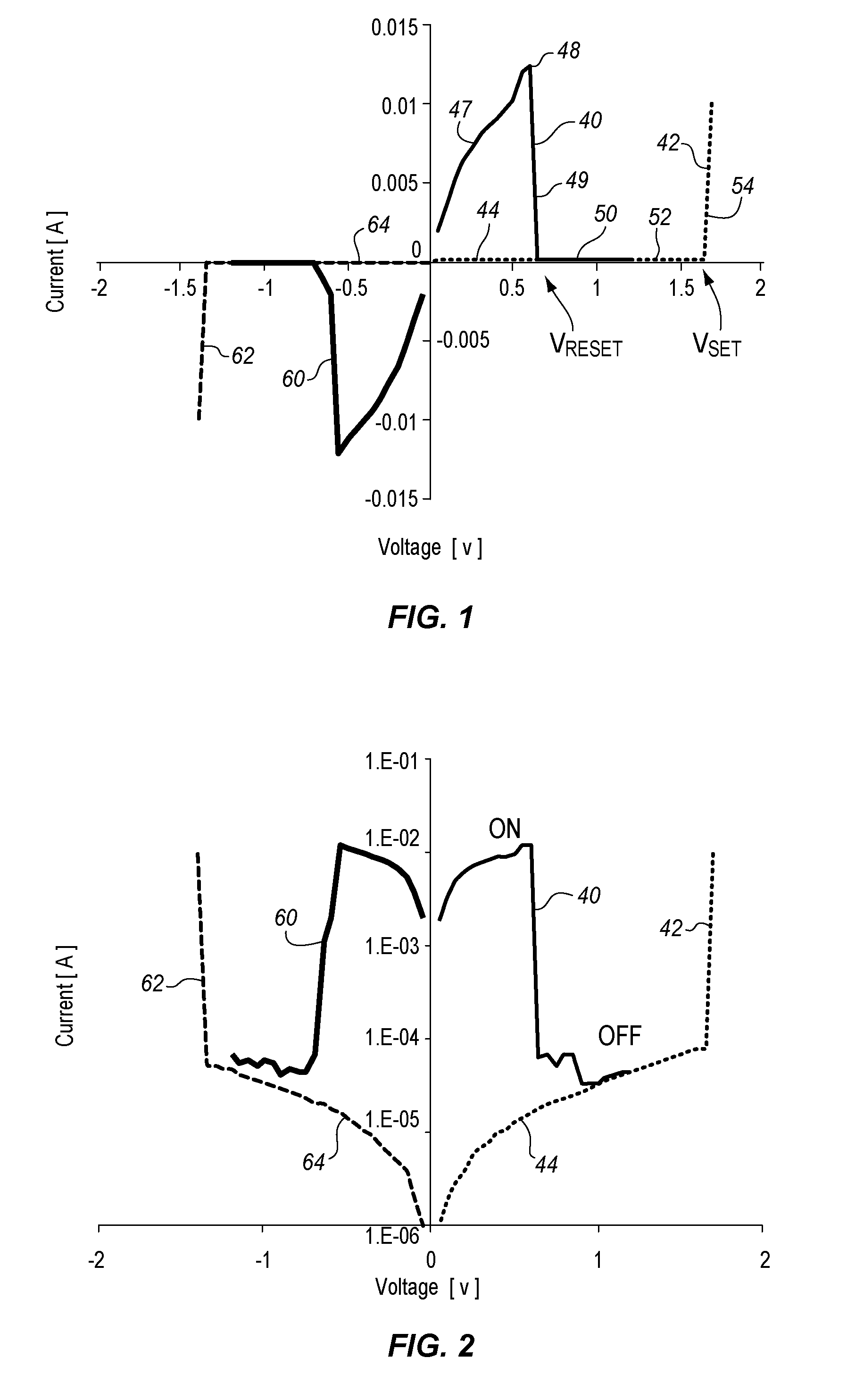Correlated electron memory
a technology of electron memory and correlation, applied in the field of integrated circuit memory, can solve the problem that the skill of memory art is generally unfamiliar to the general publi
- Summary
- Abstract
- Description
- Claims
- Application Information
AI Technical Summary
Benefits of technology
Problems solved by technology
Method used
Image
Examples
example i
[0076]A 2000 Å (Angstrom) layer of platinum was deposited on a wafer with a silicon dioxide coating. Then a 0.2 molar nickel oxide precursor in an octane solution was deposited by spin coating the platinum layer at 3000 rpm (rounds per minute). The nickel oxide precursor is available from Kojundo Chemical Company, Tokyo, Japan. The precursor was baked at 150° C. for 1 minute, and then at 260° C. for four minutes to produce an approximately 100 Å dry layer. The spin-on deposition and baking processes were repeated six times for a total thickness of 600 Å. Then a crystallization anneal was performed in a furnace at 450° C. in an oxygen atmosphere for 40 minutes to produce a 600 Å layer of the CEM nickel oxide according to the invention. Electron microscopy revealed that a significant amount of carbon was present in the material, with the carbon coming from the octane precursor. A top electrode of 2000 Å of platinum was deposited. Then the top electrode and CEM layer were patterned by ...
example ii
[0077]This example was made in the same way as Example I above except that 5% ammonia was added to the precursor. The films produced yielded similar results.
[0078]The invention includes an annealing process for CEMs. The CEM may be annealed in a gas containing at least one chemical element for forming a ligand which stabilizes the electronic properties of the CEM. Preferably, the CEM is a transition metal and the chemical element comprises carbon. Preferably, the gas comprises a gas selected from CO and CO2. Preferably, the CEM is nickel.
[0079]The invention also provides a sputtering method of making a CEM. The material may be sputtered and then annealed as described above, or reactive sputtering of the CEM in a gas containing at least one chemical element for forming a ligand which stabilizes the electronic properties of the CEM may be employed. Preferably, the CEM is a transition metal and the chemical element comprises carbon. Preferably, the gas comprises a gas selected from CO ...
PUM
 Login to View More
Login to View More Abstract
Description
Claims
Application Information
 Login to View More
Login to View More - R&D
- Intellectual Property
- Life Sciences
- Materials
- Tech Scout
- Unparalleled Data Quality
- Higher Quality Content
- 60% Fewer Hallucinations
Browse by: Latest US Patents, China's latest patents, Technical Efficacy Thesaurus, Application Domain, Technology Topic, Popular Technical Reports.
© 2025 PatSnap. All rights reserved.Legal|Privacy policy|Modern Slavery Act Transparency Statement|Sitemap|About US| Contact US: help@patsnap.com



